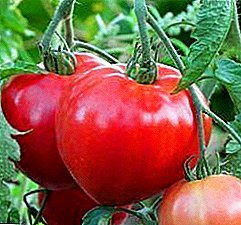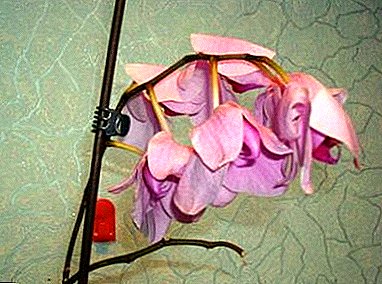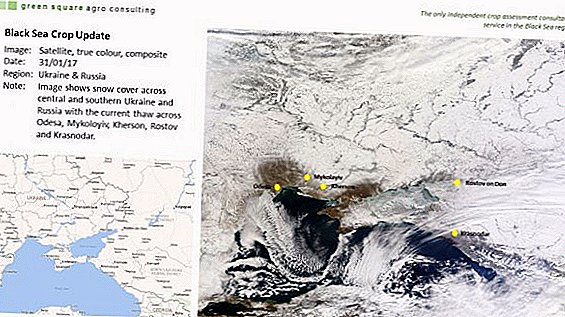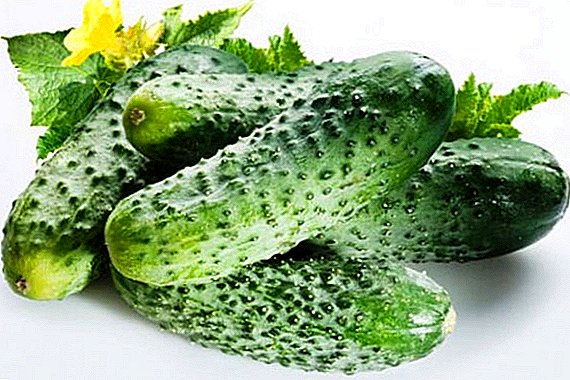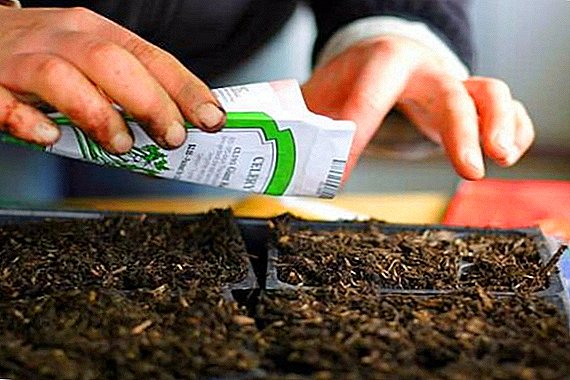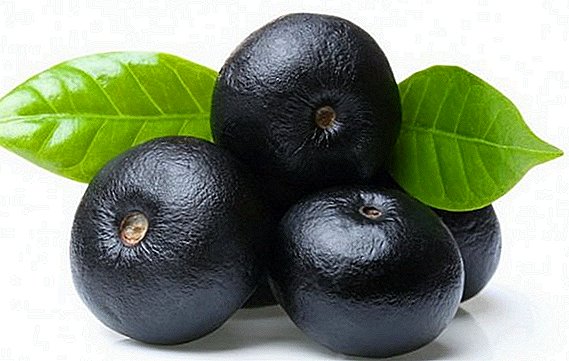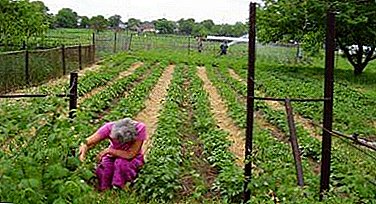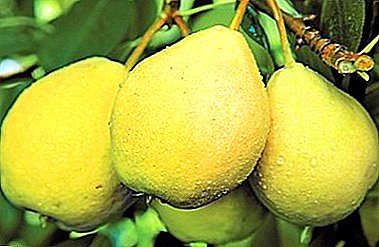
Well, what a garden without a pear? Even those gardeners who are not very interested in a pear as a garden crop, at least one tree was planted.
The pear is still inferior in its popularity to apple trees, this comes from the lack of information of gardeners about new breeding developments, it has long ceased to be a capricious southerner.
The choice of gardeners offers more than 200 varieties with a variety of characteristics - plant, do not be lazy, and wonderful fruits will flaunt on your table from mid-summer to March.
Pear Larin until March it will not be preserved, but there are enough winter varieties without it - the description of the variety, the photo of the fruits and the gardener's reviews are later in the article.
What kind of pears is this variety?
 Variety pear Larinskaya - autumnharvest should be in the first half of September, he kept a couple of monthsor rather, it ripens.
Variety pear Larinskaya - autumnharvest should be in the first half of September, he kept a couple of monthsor rather, it ripens.
Pears at the time of collection of light green color, during storage the color changes to light yellow, the juiciness of the fruit does not decrease, the taste improves significantly, it becomes sweeter.
This taste is called dessert. Seed chamber is small, has the form of onions, open type, the seeds are small, brown.
Great taste can also boast pears Elena, Vernaya, Victoria, Forest Beauty and Muscovite.
The shape of the fruit is round, pear-shaped, weight up to 200 grams with good care, and on average - 140-150 grams with yield 50 kilograms of wood per year.
Also belong to the high-yielding varieties: January, Yakovlevskaya, Chudesnitsa, Svetlyanka and Rogneda.
Breeding history and breeding region
Larinskaya pear variety - hybrid form between varieties Clapp's pet and Ussurian pear 41-15-9, obtained by breeders of the South Ural Scientific-Research Institute for Horticulture and Potato. Included in the State Register of the Ural region.
Variety pear Larinskaya - further in the article photo of the fruit and a description of the appearance of the tree.
A photo





Appearance
Pear tree has a great growth power, about 6 meters, its mighty crown has an unusual appearance, the branches grow from the trunk at a right angle, curved as it is necessary, are oriented strictly upwards (a feature rare for a pear), the trunk does not have excessive knotty.
 The leaf is large, the flowers are white, fragrant, the variety is skoroplodny, the first fruits appear on a five-year plant.
The leaf is large, the flowers are white, fragrant, the variety is skoroplodny, the first fruits appear on a five-year plant.
It should be noted unpretentious varieties Larinskaya.
High resistance to very low and very high temperatures, easy drought tolerance scab resistance pear gall mite, bacterial burn makes this variety attractive for gardeners.
Choosing a landing site
In spring or autumn, planting a young plant on the site - there is no fundamental difference, the conditions in which the seedling falls into are more important than the time of its “settlement”.
A pear cannot be considered a fastidious plant, but it, like any other species, has its own preferences, and they must be taken into account when choosing a place to plant, otherwise you cannot see good yields.
The tree is powerful, with age the crown of the Larinskaya variety becomes sprawling, and since the Pearl of Larinskaya does not tolerate close neighborhoods, the place for its landing needs to be chosen away from buildings, fences and plants that could compete with her.
For normal growth and fruiting pear need a lot of sunlight, with its deficiency, the tree does not gain full growth, the fruits are small, sour, poorly pigmented, the crown of the tree must be well ventilated, it is necessary for the prevention of fungal diseases.
From all this it follows that for pear choose a free, well-ventilated and lighted place.
 The pear is not very fastidious to the soil composition, it grows worse on heavy loams, but any soil can be ennobled when planted.
The pear is not very fastidious to the soil composition, it grows worse on heavy loams, but any soil can be ennobled when planted.
When choosing a place, you need to pay attention to the fact that a good harvest is possible only if other pears grow nearby.
The best pollinators for the Larinskaya variety are the following varieties: Severyanka and Fairytale.
Landing
It is necessary to plant a pear of Larinskaya, considering its size, with an interval of 6 by 4 metersthe depth of the landing pit should be not less than 1 meter, and diameter - 80 to 80 centimeters.
When digging a hole, the top layer of soil, since it is more fertile, should be set aside separately from the less fertile bottom.
Topsoil carefully mixed with a large bucket of humus, 1 cup of superphosphate, 0.5 cups of potassium salts and shovel wood ash.
This amount of organic matter is enough for 3 years, and mineral fertilizers can be applied after a year, if the growth of a young plant has slowed.
A hillock is arranged in the center of the bottom of the planting hole, the seedling root system is evenly located along its slopes, very well, if two people take part in planting - one keeps the seedling in the desired position, and the second one carefully falls asleep the hole, constantly tamping the soil.
The roots should lie flat on the ground, the airbags will lead to the rotting of the roots and the death of the plant.
Root neck should be 5 centimeters above soil level, when watering, the soil will settle and the root neck will be in the right place.
 Before watering from less fertile soil deposited when digging a planting pit, it is necessary to make a roller along the edge of the landing pit so that the water during the irrigation does not spread, one sapling needs 2 buckets of water; water should be added gradually as it is absorbed.
Before watering from less fertile soil deposited when digging a planting pit, it is necessary to make a roller along the edge of the landing pit so that the water during the irrigation does not spread, one sapling needs 2 buckets of water; water should be added gradually as it is absorbed.
The younger the seedling, the faster the rooting takes place, for plantings are best suited saplings 1 and 2 years.
End landing should driving a peg into the landing hole, it is located near the sapling, but at such a distance so as not to interfere with its growth, the plant is tied to a peg freely.
Twine should not fit snugly to the boom and prevent its rapid growth. Plant pear better springDuring the vegetative period, a young plant manages to take root and prepare for winter.
Plants purchased in the fall must prikopat in the trench, leaving on the surface of the trunk and crown, placing them at an angle of 45 degrees.
Pruning
Pear itself forms its crown, but it is better not to let this process take its course and make its own adjustments. In the event that the seedling is a year shorten it to 1 meter, remove buds below 50 centimeters.
Biennial seedling needs shortening of twigs one third of their lengthThis activates the development of the root system of the young plant and accelerates its entry into the fruiting stage.
In the second year after landing sprouting one-year-old twigs, they are shortened by one third, and the former two-year-old needs only sanitary and corrective pruning.
 Since the third year of life pear passes annually sanitary pruning which gradually, as the tree ages, is replaced by sanitary rejuvenating.
Since the third year of life pear passes annually sanitary pruning which gradually, as the tree ages, is replaced by sanitary rejuvenating.
When pruning pears, the general rules for all plants are observed, when cutting a bitch there should be no hemp, the bark in the place of the cut is cleaned with a sharp knife, the place of the cut should look neat, not for beauty, of course - for the health of the plant, the less damage, the easier the plant will suffer pruning, the faster the wounds will grow.
Everything cuts more than 1.5 centimeters in diameter should be painted with linseed oil or oil paint. The crown of a pear of a grade Larinsky by the nature of the average density, it considerably simplifies cutting.
Watering
After landing young plant needs constant monitoring of soil moisture and water as needed, a well-established plant is watered with a prolonged drought, but no more than once a month irrigation is accompanied by fertilization, as their absorption without sufficient moisture is difficult.
Variety Larinskaya drought-resistanttolerates high temperatures and adult watering is not necessary, and fertilizing with mineral fertilizers can be done by foliar method.
Top dressing
 A young plant needs a rich diet and fertilizer applied for planting is sufficient for several years., the lack of nutrients will immediately become noticeable by slowing the growth of shoots.
A young plant needs a rich diet and fertilizer applied for planting is sufficient for several years., the lack of nutrients will immediately become noticeable by slowing the growth of shoots.
If the plant develops normally, do not rush to feed it, an excess of organic or nitrogenous fertilizers causes increased growth, which contributes to the stretching of the shoots, reducing their rate of agingthe thickening of the crown with tops, and an excess of potassium, phosphorus and other substances leads to poisoning of the plant’s body, there are all sorts of unpleasant symptoms similar to the disease.
Science does not stand still and interesting, effective developments of scientists, and among them - foliar feeding, are becoming more and more widespread. Foliar nutrition is aimed at improving the plant immunity, increasing the yield and improving its quality.
Spraying can be carried out simultaneously with the prophylactic treatment with insecticides, foliar preparations have been developed and are already produced enough to find the necessary one that meets your requirements.
Most other gardeners use drugs: Ecolist, Adobe, Kristalon, Salyubor and the like.
Care
The first years of life, seedlings are especially vulnerable and require constant care about themselves.
 Watering, weeding, loosening of the trunk circle are done during the whole vegetative period, in the autumn the trunk circles need to be dug up to a shallow depth, and with the onset of fruiting it is necessary to produce tinning of the trunk circles and weeding the grass as necessary.
Watering, weeding, loosening of the trunk circle are done during the whole vegetative period, in the autumn the trunk circles need to be dug up to a shallow depth, and with the onset of fruiting it is necessary to produce tinning of the trunk circles and weeding the grass as necessary.
Young trees can attract rodents in the winter, in the autumn it is necessary to tie the trunks with ruberoid or other materials that could not damage mice and hares.
As they grow older, the need for this protective measure disappears, the tree builds up strong bark, but as it grows, dead, cracked fragments accumulate on it.
They become a haven for all sorts of pests and disease pathogens, mosses and lichens are settled on dead wood. This situation is unacceptable. trunk and skeletal branches should undergo annual spring reorganization.
Using a scraper or metal brush that does not damage the plant, gently scrub all excess to live barkpossible damage is treated with iron sulfate for disinfection, garbage is carefully removed and burned.
Trunk and skeletal branches with a mixture limes and clays in equal parts with the addition of 100 grams of ferrous sulfateif there is such an opportunity, add a little mullein, the composition should have the consistency of liquid sour cream.
This composition is not tested by one generation of gardeners and does not need advertising. These works should be carried out in the spring - the bark is softened, easily removed, the living tissues of the trunk are almost not damaged.
In the autumn it is necessary to carefully examine the crown, if there are any dry fruits, carriers of diseases, they must be removed and burned together with the collected foliage.
Diseases and pests
 Variety pear Larinskaya has an enviable resistance to diseases she has hereditary immunity through the Ussuri pear 41-15-9, of which it is a hybrid form.
Variety pear Larinskaya has an enviable resistance to diseases she has hereditary immunity through the Ussuri pear 41-15-9, of which it is a hybrid form.
Early spring or late autumn spraying with 10% urea solution has a good preventive effect. Everyone has long known that the right agricultural technology will protect the garden from diseases or allow them to be quickly detected and cured.
Pest control is the prevention of fungal and bacterial infections, namely insects are carriers of spores and bacteria, as they move easily throughout the garden.
Also resistant to diseases can boast: Enchanting Spectacle, Uralochka, Silent Don, Tyoma and Svarog.
The garden will be saved from podozhorok, tsvetoedov, ticks, pear mediators by preventive treatment before and after flowering with any insecticide.
It is difficult to find flaws in a pear of the Larinskaya variety - an exotic appearance, resistance to all kinds of adverse conditions, dessert taste and consistently high yield allowed the variety to master the lovers' gardens; they grow the pear of the Larinsky variety and in fruit farms on an industrial scale.
Among the unpretentious varieties of pears also worth paying attention to Krasnobakaya, Hera, Cathedral, Krasulya and Lada.


